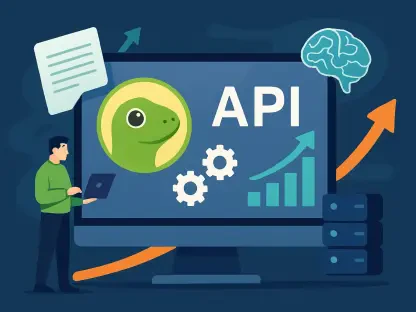Listen to the Article
Software systems are becoming increasingly complex. For example, modern cars have over 150 electronic control units, making it difficult to understand applications or infrastructure solely through source code or traditional monitoring. As digitalization advances, businesses require comprehensive visibility into how their systems perform, particularly in complex setups such as microservices and cloud environments. Observability helps address these difficulties by analyzing telemetry data, such as logs, metrics, and traces generated by the system. Monitoring is a key aspect of telemetry that is particularly relevant to DevOps.
Visibility enables organizations to monitor, assess, and respond promptly to changes or issues. Without it, companies may struggle to identify the root causes of issues, pinpoint bottlenecks in their infrastructure, or comprehend the effects of the changes they implement. This shift raises an important question: This article explains why insights are essential for maintaining system availability, reliability, and performance in a fast-changing digital world.
How Does Observability Work?
Observability includes monitoring application performance, IT infrastructure, communication networks, and customer service. It involves collecting, storing, analyzing, and interpreting data generated by various components within a system. The process leads to a better user experience and smoother business operations.
Here are the steps on how system awareness works:
Data Collection
Observability begins with collecting data from different parts of the system. The process includes logs, metrics, traces, and other information from applications, infrastructure, and networks.
Data Storage
The system designed for Big Data stores the collected data, allowing for fast and efficient access for later analysis.
Data Analysis
After saving the data, the next step is to analyze it for insights. At this stage, data analysts will use different monitoring and examination methods, visualizations, and other techniques. They should look for patterns, trends, anomalies, or potential issues in system performance.
Data Interpretation
Understanding data is a key part of observability. IT professionals need to understand the data’s meaning, identify the root causes, and take actions to improve performance or resolve problems.
By following these steps, telemetry helps companies better understand their systems’ performance and respond quickly to changes or issues.
Choosing the Right Observability Tools
Observability data helps teams analyze the cause and find problems when incidents happen. By following the flow of requests, checking logs, and looking at key metrics, teams can pinpoint the root causes of issues. This approach makes troubleshooting easier and reduces the time needed to fix problems.
When you evaluate system awareness platforms, consider several key factors:
Unified Observability Platform: Choose a tool that delivers real-time insights across applications and infrastructure. A single, unified platform allows teams to monitor system performance, user behavior, and infrastructure components in one place, simplifying workflows and boosting efficiency.
Scalability and Flexibility: As software systems grow, so do data volumes and infrastructure complexity. The proper monitoring platform should scale seamlessly to handle this growth while continuing to provide actionable insights without the need for multiple tools.
Advanced Troubleshooting and Investigation: Identifying and resolving issues is key to maintaining high system performance. Practical awareness tools provide structured views, including tracing and log aggregation, to help teams pinpoint root causes faster and more accurately.
By combining robust analysis capabilities with flexible, scalable infrastructure, observability platforms enable teams to monitor systems proactively and make informed decisions based on real-time insights.
Integration with Existing Systems
Connecting telemetry tools with existing systems is crucial for effective monitoring and control. Most observability platforms offer an Application Programming Interface, Software Development Kit, and plugins to integrate with various technologies easily. For example, these tools can connect with popular cloud services like AWS, Azure, and Google Cloud, letting users monitor their cloud infrastructure and applications from one place.
These platforms can also work with tools, such as logging tools like the ELK Stack, monitoring tools like Prometheus, and tracing tools like Jaeger. This integration allows users to gather and analyze data from different sources, giving a clear view of system performance.
When integrating insight tools, it’s important to consider data consistency, scalability, and security. Users should check if the system awareness can handle large amounts of data and provide real-time insights into performance. This approach improves monitoring and helps the platform grow with the business, adapting to increased data and complexity.
Top Observability Tools for 2024
As monitoring becomes crucial for product management and engineering, numerous tools have emerged to help teams monitor and enhance their systems. Below is a list of the eight leading observability platforms:
AppDynamics
AppDynamics provides clear information about how your application performs and how users behave. This clarity helps teams create smooth user experiences and quickly fix problems. It offers application performance management tools that let teams check the system’s health in real time.
Datadog
Datadog is well-known for its effective monitoring of infrastructure and applications. It provides strong support for distributed systems. With one platform, you can get real-time insights into metrics, logs, and traces. Its practical interface makes it ideal for monitoring microservice architectures.
Dynatrace
Dynatrace uses artificial intelligence to automatically find the root cause of issues and monitor complex systems in real time. Its ability to scale and monitor cloud infrastructure makes it a top choice for growing and changing businesses.
Grafana
Grafana is a popular tool for visualizing system metrics. It helps teams create real-time dashboards easily and works well with many data sources, giving it flexibility for monitoring infrastructure and performance metrics.
Honeycomb.io
Honeycomb.io helps teams understand their complex systems in real time. It allows product teams to explore their data and quickly fix problems, improving the speed of delivery and making the system more reliable.
Moesif
Moesif helps you understand how people use application programming interfaces and different products. It provides clear insights into user interactions with APIs. This information allows teams to improve the experience for developers and users, while also enhancing product performance.
New Relic
New Relic provides tools to help teams track and understand their systems, from servers to user experience. Its features include application performance monitoring, infrastructure monitoring, and synthetic testing, allowing teams to see how well their systems perform
Splunk
Splunk effectively handles large amounts of machine data, making it a top choice for organizations with complicated systems. It can analyze log data in real time, allowing teams to understand how systems work, how users interact, and what security events occur.
These tools offer different features such as performance metrics, infrastructure monitoring, and distributed system tracking. To choose the right platform, consider your team’s specific needs and the complexity of your software systems.
Benefits of Product Observability
Product observability offers essential benefits that empower product managers and engineers to make better decisions. It provides insights into how users engage with a product and links this data to key business metrics. This understanding allows teams to grasp user behavior, preferences, and challenges. With this knowledge, they can develop more effective product updates, enhance user experiences, and achieve greater business success.
One significant advantage of visibility platforms is their ability to reduce risks associated with product changes. By monitoring system behavior in real-time, teams can quickly assess how new features or updates affect user experience and system performance. This capability enables them to identify and resolve issues rapidly, minimizing downtime and improving system stability.
Observability tools also facilitate root cause analysis by gathering and presenting data from complex systems. This visibility allows teams to examine performance metrics and pinpoint the sources of problems, such as memory usage or network performance. This improved insight greatly enhances the team’s ability to troubleshoot issues and optimize system performance.
Furthermore, the continuous feedback loop provided by product monitoring enables teams to tackle potential issues early on. This feature ensures that the product evolves in alignment with user needs and business objectives.
Conclusion
Observability is vital for modern software systems as they become more complex and user expectations increase. It helps organizations understand their systems’ performance, find problems early, and maintain stability.
Organizations should set clear goals and key performance indicators to achieve effective monitoring, gather relevant data, and create easy-to-read dashboards with alerts. They should also promote a culture of visibility and keep up with the latest tools.
Advancements in machine learning, AI, and technologies like serverless and edge computing will improve telemetry in the future. Standardizing data will make it more straightforward, making observability a key part of better performance, reliability, and customer satisfaction.









